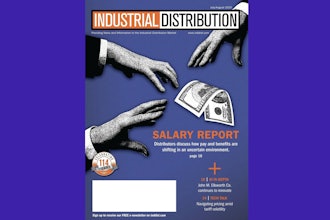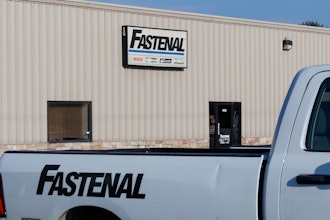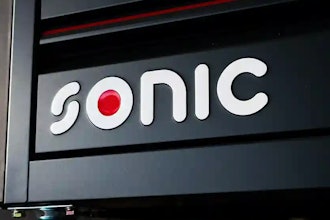
“Your competition offered a better price, and we’re considering their proposal.” Does this sound familiar? Every seller has experienced this scenario. Oftentimes, sellers don’t know how to respond. Sellers think, “How could this customer shop our solution when we create all this value?” On a recent coaching call, one seller shared his response to this price objection.
He said to the customer, “I understand that you’re looking to save money. However, if you buy from the cheaper competitor, we’re going to free up your reserved inventory and sell it to other customers. If this other supplier fails to deliver, we won’t be able to help you.” What a great response to a price objection! Booyah! The seller then dropped the mic and walked out of the room (or maybe I imagined that last part).
His response triggered the buyer’s core motivator, fear. Initially the buyer feared paying too much, until the seller emphasized the greater fear — a cheaper competitor that fails to perform. In my new book, Selling Through Tough Times (McGraw-Hill), I detail how fear influences buying decisions and behavior. Fear is the most powerful motivator and drives many of our decisions. In the above response, the seller focused the buyer’s attention on what he stands to lose. This loss loomed larger than the potential gain of a cheaper price.
Customers are often tempted with cheaper prices. However, a cheaper alternative that fails to perform is lousy value at any price. Remind the customer of what they gain with you and what they stand to lose if they go with a competitor. Here are seven ideas to protect your business from cheaper competitors.
Emphasize the fear of the unknown
People crave consistency (especially in uncertain times). People take comfort in the status quo. As the incumbent, you have immense power. The customer is familiar with your solution and accustomed to your value. The only unknown is whether this new, cheap competitor can follow through on the lofty expectations you have set. The fear of the unknown weighs heavier on the buyer than the gain of cheap prices.
Emphasize the opportunity value and opportunity cost
In Value-Added Selling (McGraw-Hill 4th ed.), readers are posed with this question, “What does your solution give the buyer the opportunity to do tomorrow that they cannot do today?” Answering this powerful question highlights the opportunity value of your solution. You may help a customer gain access to new markets, solve a unique problem, or serve their customers better. Once the buyer is aware of your value, they are aware of what they forego by choosing a different solution.
Point out the double-edged sword
Appeal to the buyer’s common sense. If you cut your price, you’ll have to cut something from your package. Rather than adding value, you are reminding the customer of the cost of subtracting value. Detail the value you must subtract to justify the lower price. It’s likely you’ll be cutting some value the customer appreciates and expects.
Inform customers of your total cost
When customers are aware of the cost associated with delivering your value, they perceive your price as more equitable. For example, I remember visiting a high-end Chicago restaurant known for its fresh fish. I expected the restaurant entrance to be adorned with swanky décor, but it wasn’t. Instead, the wall was covered with pieces of paper that looked like receipts. I looked closer and noticed it was the bills of lading and cost for the fish on the menu. The simple decorations had an enormous impact on the customers’ perception of equity. Customers were getting fresh fish flown in daily. Obviously, there was an added cost.
Add value or bundle more services
Equity plays a major role in decision making. The number-one reason buyers give price objections is because of fairness. Customers don’t believe you are charging a fair price for the value they receive. To combat this perception, make the buyer aware of all the hidden value in your solution. Also, consider adding more value. What additional services does the buyer need? What additional expertise and support can you offer? How could you bundle in more value to justify the price difference?
Spotlight buying dissonance
Buying dissonance spotlights the disconnect between what the buyer says and does. The buyer may tell you his needs are special but opts for a cheaper solution. In this disconnect, there is an opportunity for a compelling rebuttal. You can emphasize the threat of loss with a cheaper alternative. Consider asking this question: “Mr. Customer, is the quality you are willing to pay for consistent with your vision for this project?” The goal is to demonstrate that the customer’s purchasing objectives conflict with the price he wants to pay.
Social pressure is a powerful ally
Our research shows that six people are involved in purchasing decisions. Out of those six decision makers, one is a price shopper. This is the individual pressuring you for the discount, while the other five will pay for your value added. For price shoppers, there is a stronger motivation than cheap prices — making a high-risk decision. When other decision makers champion your solution, the price shopper will follow suit. Ask your allies to sell your solution internally. The decision is no longer driven by pricing pressure, it’s driven by social pressure.
To protect your existing business and your margins, remind customers of what they stand to lose. Introduce a benign sense of fear to take the focus off price. You might read this and think, “These techniques seem a little heavy-handed for the customer-focused approach of Value-Added Selling,” but they are not. Customer-focused sellers are motivated to help customers make the best decision that generates the desired outcomes. Being customer focused often means helping the customer get out of their own way.
Paul Reilly is a speaker, sales trainer, author of Selling Through Tough Times, coauthor of Value-Added Selling, and host of The Q and A Sales Podcast.






















